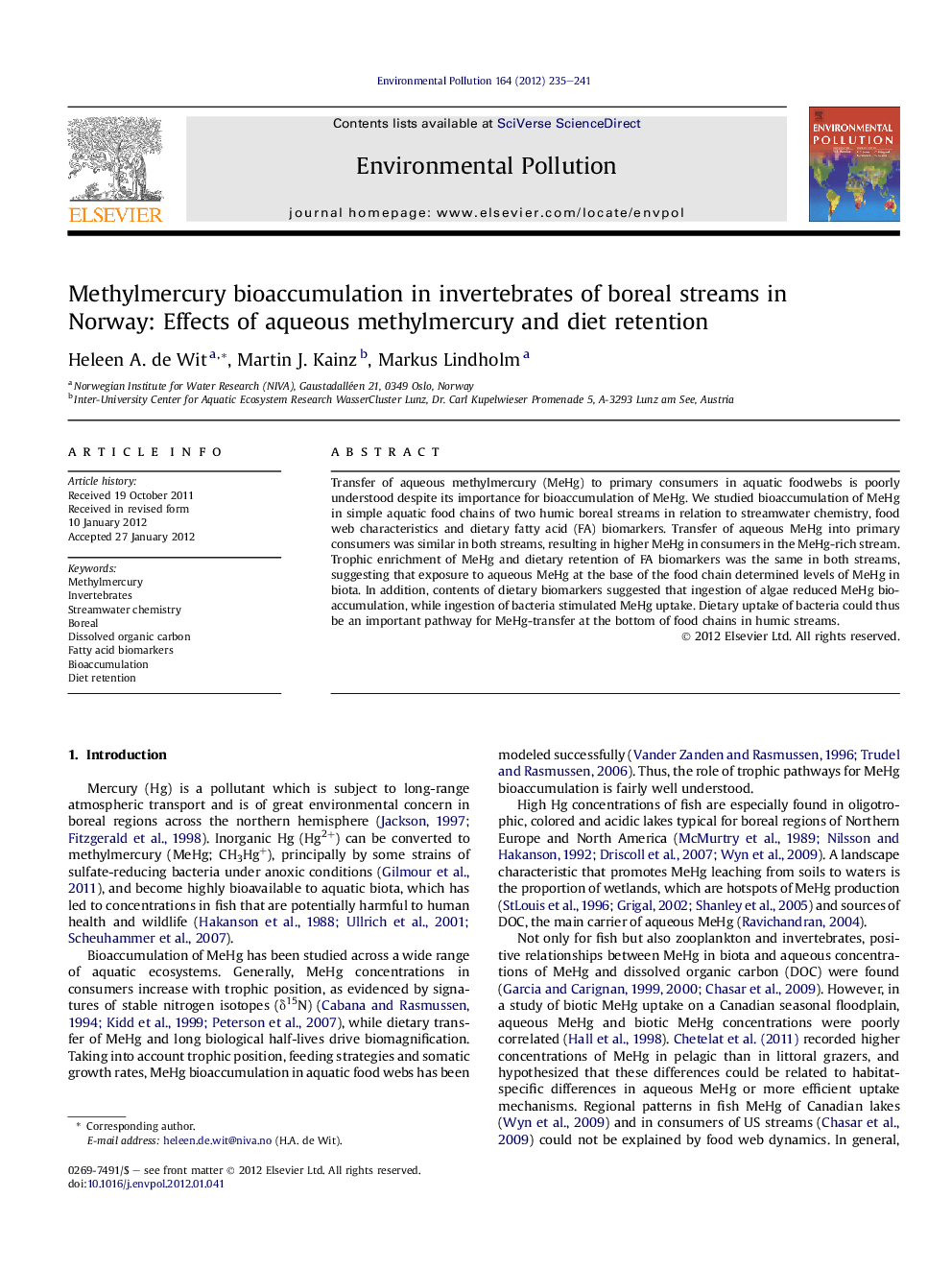| کد مقاله | کد نشریه | سال انتشار | مقاله انگلیسی | نسخه تمام متن |
|---|---|---|---|---|
| 4425082 | 1619208 | 2012 | 7 صفحه PDF | دانلود رایگان |

Transfer of aqueous methylmercury (MeHg) to primary consumers in aquatic foodwebs is poorly understood despite its importance for bioaccumulation of MeHg. We studied bioaccumulation of MeHg in simple aquatic food chains of two humic boreal streams in relation to streamwater chemistry, food web characteristics and dietary fatty acid (FA) biomarkers. Transfer of aqueous MeHg into primary consumers was similar in both streams, resulting in higher MeHg in consumers in the MeHg-rich stream. Trophic enrichment of MeHg and dietary retention of FA biomarkers was the same in both streams, suggesting that exposure to aqueous MeHg at the base of the food chain determined levels of MeHg in biota. In addition, contents of dietary biomarkers suggested that ingestion of algae reduced MeHg bioaccumulation, while ingestion of bacteria stimulated MeHg uptake. Dietary uptake of bacteria could thus be an important pathway for MeHg-transfer at the bottom of food chains in humic streams.
► We examined MeHg bioaccumulation in simple food chains in two boreal streams.
► Higher MeHg in invertebrates was associated with higher aqueous MeHg.
► Dietary biomarkers showed that consumers in both streams accessed similar food sources.
► We concluded at exposure to aqueous MeHg determined bioaccumulation of MeHg.
► Seasonal variation in MeHg in biota could be related to diet using dietary biomarkers.
Journal: Environmental Pollution - Volume 164, May 2012, Pages 235–241